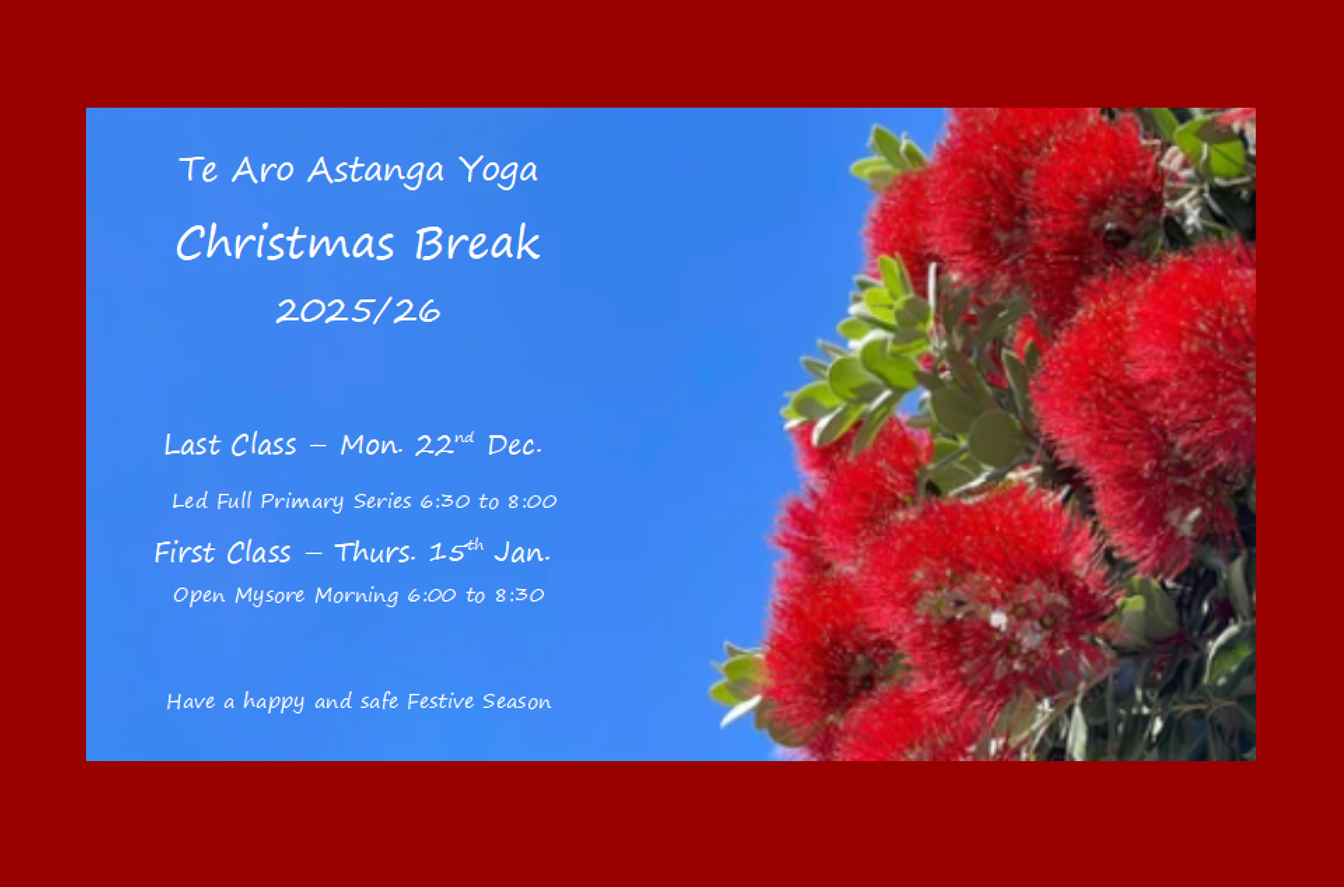Want to Start Ashtanga Yoga? – A Word of Warning
TAAY Summer Break 2025/26
As 2025 draws to a close I’d like to thank everyone who has supported Te Aro Astanga Yoga this year. I recognise how difficult the year has been financially for many of you and appreciate that you have made the commitment to continue to practice Ashtanga Yoga with us. Te Aro Astanga Yoga is surviving thanks to you! I hope to see you all for a fantastic 2026.
Last Class 2025: Monday 22nd Dec. — Led Full Primary Series 6:30 to 8:00 am.
First Class 2026: Thurs. 15th Jan. — Open Mysore Morning Class 6:00 to 8:30 am
I hope that you and your whānau have a safe and happy Festive Season.

0 Comments